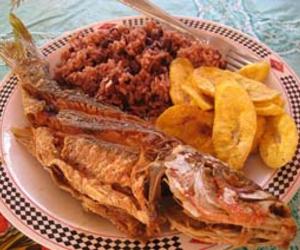Cookery Contest in Gibara
- Submitted by: manso
- Travel and Tourism
- 07 / 28 / 2011

2011.07.27 - 09:49:01 / radiorebelde.icrt.cu / Cookery Contest in Gibara. Holguín, Cuba.- It may be perhaps of your preference the local fried Lisetas from Manzanillo town, the custard tart from Cascorro town, the stew from La Tunas province, the pancake from Manacas town, the Paella from Cienfuegos province, the Calalú and Guisos made up of corn from Guantánamo province, the Caracol chicken and Ambuilas Fried bananas from Pinar del Río province or the Tamales (ground fresh corn wrapped in banana husks) from Baracoa town.
The fact is that no one leaves Baracoa without testing its Prú (fermented drink flavored with spices) and Cuerúas. Besides, it is also common the local Mata Jíbaro culinary recipe in the easternmost mountains of Cuba, which is made up of boiled bananas squashed in a basin filled with fried pork rinds.
In short, it may be a difficult number to determine taking into account the dishes and wide variety of the Cuban cookery and confectionery.
All of them with their regional and even convincing hallmark, which have always been part of the well-preserved identity of their region, thus taking them through generations as also happen with music, dances and even the way of walk, talk and so on. Therefore, these regional icons don´t face the risk of decreasing their important feeling about the national identity which is a feeling that make all Cubans to come together under the special influence of our flag. Moreover, the regional typical dishes complement others emblematic and generalized ones such as rice and black beans, stew and the traditional roast pork.
With such antecedents, the specialists in the History of tourism commission in Holguín province, who are advised by the prestigious Culinary Association branch of the Republic of Cuba, made a especial call devised for the followers of the best culinary and practice Cuban traditions.
Although, it is informed about the possibility of participation of any individual, the call points at the residents of Gibara town, in particular, those who currently reside in that village or any other surrounding place taking into consideration that it was precisely there where the happy idea emerged.
The first official meeting entitled Delicias del Arte Culinario Gibareño (Delights of the Culinary art in Gibara) opens the possibility to participate either with traditional recipes or those of new creation. However, it is compulsory to use local ingredients, even though the sea is logically the vastest resource in Gibara. This region is also famous due to its beans, banana plantations harvest in rocky soil, and its pigs breeding mainly.
All the contenders should deliver their dishes and recipes in person or sending them to the Communitarian house of culture in Gibara. Moreover, a great exposition will be opened until that same day afternoon, when all will be ready to deliver and taste in family some of the winning dishes and recipes selected both institutionally and by popular vote.
It is so important the feeling of cultural identity of the meeting that its date was slated for July 25th which is the historical date for the 113th anniversary of the Cuban mambises troop’s entry in Gibara in 1898.
No doubt, it is great initiative that may be multiplied in other places with similar motivations about to keep and rescue traditions of the great Cuban cookery, the same one that has inspired writers, musicians, poets, and above all, the most demanding followers of the good culinary art. By Aroldo García Fombellida
Translated by: Juan Carlos Caballero Puig
Comments